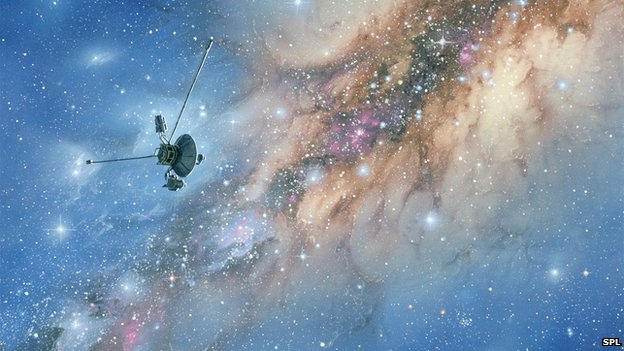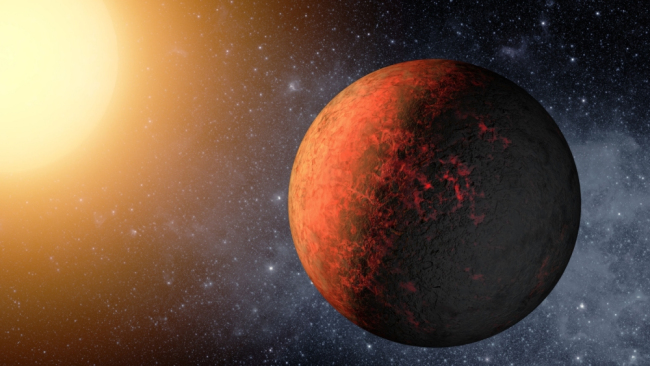 The Voyager-1 probe may be outside the Solar System, some scientists say.
The Voyager-1 probe may be outside the Solar System, some scientists say.
If confirmed, it would be the first man-made object to exit.
Launched in September 1977, the probe was sent initially to study the outer planets, but then just kept on going.
Researchers who have studied its data indicate it has now entered a realm of space beyond the influence of our Sun.
But the US space agency (Nasa) says there is still some doubt about this.
Voyager is currently moving more than 18 billion km from Earth, or 123 times the distance between our planet and the Sun.
No human artefact has ever reached so deep into the cosmos.
A measure of the distance travelled is that it takes a staggering 16 hours for Voyager 1’s radio messages to arrive on Earth.
Standing in NASA’s Jet Propulsion Laboratory in California two years ago, I watched as data from the lonely craft flickered across giant screens.
The scientist behind the mission, Ed Stone, talked in adoring terms of the 70s technology that has survived decades of hurtling through space to become mankind’s most distant emissary.
NASA has speculated for years about the actual moment of crossing from our solar system into the void; and now this may finally have happened.
The next time the craft will come even remotely close to another star? About 40,000 years.
The claim is made in a soon-to-be published paper in the journal Geophysical Research Letters.
The spacecraft has been monitoring changes in its environment for some time that have suggested it is about to cross the Solar System’s border – the so-called heliopause.
It has been detecting a rise in the number of high-energy particles, or cosmic rays, coming towards it from interstellar space, while at the same time recording a decline in the intensity of energetic particles coming from behind, from our Sun.
A big change occurred on 25 August last year, which the GRL paper’s authors say was like a “heliocliff”.
“Within just a few days, the heliospheric intensity of trapped radiation decreased, and the cosmic ray intensity went up as you would expect if it exited the heliosphere,” explained Prof Bill Webber from New Mexico State University in Las Cruces.
Nasa funded the study but says the statement that Voyager could be in interstellar space does not reflect the view of everyone working on the project, and Prof Weber acknowledges there is an on-going debate.
Many researchers would like a long period with the data all pointing in one direction before calling the exit definitive.
“It’s outside the normal heliosphere, I would say that,” Prof Webber said in a release from the American Geophysical Union, publishers of GRL.
“We’re in a new region. And everything we’re measuring is different and exciting.”Voyager-1 was launched on 5 September 1977, and its sister spacecraft, Voyager-2, on 20 August 1977.
The probes’ initial goal was to survey the outer planets Jupiter, Saturn, Uranus and Neptune – a task they completed in 1989.
They were then despatched towards deep space, in the general direction of the centre of our Milky Way Galaxy.
Their plutonium power sources will stop generating electricity in about 10-15 years, at which point their instruments and transmitters will die.
Voyager-1 is on course to approach a star called AC +793888, but it will only get to within two light-years of it and it will be tens of thousands of years before it does so.
Source BBC news

Originally posted 2013-03-20 18:20:07. Republished by Blog Post Promoter

![20130320-194404[1]](https://coolinterestingnews.com/wp-content/uploads/2013/03/20130320-1944041.jpg)










